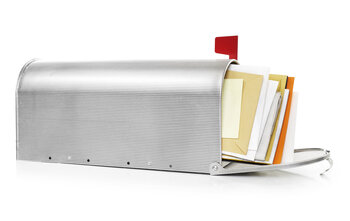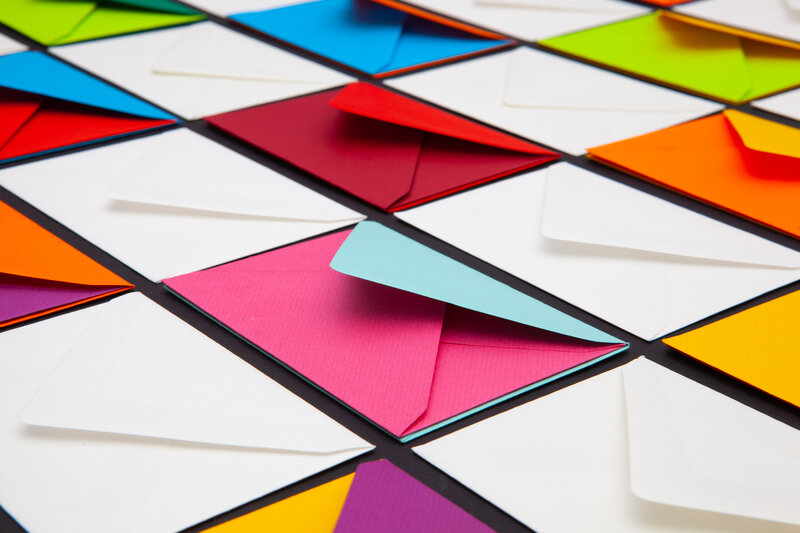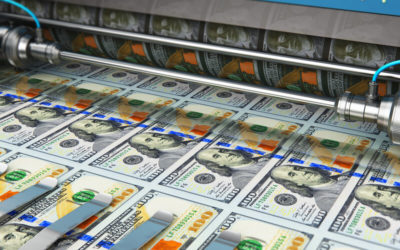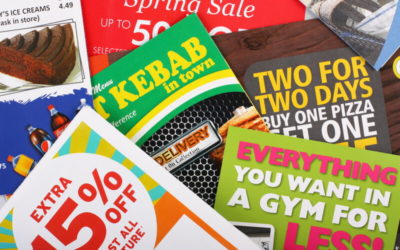There’s a lot that goes into planning a print marketing campaign. You have to choose the right mailing list, select the proper format for your campaign, and weigh the pros and cons of a variety of different design factors, just to name a few. One of the most important considerations for any marketer is the color of your direct mail piece. When you’re planning your next direct mail campaign, it’s essential to understand color psychology. Your direct mail success could depend upon it. What’s the best color envelope for direct mail? Let’s find out.
To Know the Best Color Envelope for Direct Mail, Know Your Audience

It’s one thing to know who your ideal clients are, with standard demographic information like age, gender, education, occupation, cultural background, and marital status. It’s another to really “get” them on a more personal level. After all, a better view of your customers includes psychographics.
Demographics vs. Psychographics
Demographics are helpful, but they don’t reveal a consumer’s motivations, interests, attitudes, and personality. Psychographics reveal buying patterns, personal interests/values, lifestyles, and more. Psychographics is:
The study and classification of people according to their attitudes, aspirations, and other psychological criteria, especially in market research.
You need to consider your customer’s daily habits. How do you manage that? You’ll have to answer some important questions about them—both generally and more specifically in how they feel about your product or service. The more you know about your customers, the better. This really helps you hone in on what they want—including what colors will appeal to them the most.
Send them surveys to learn more about them.
- Find out about their interests.
- Ask what activities they regularly take part in.
- Discover their attitudes about certain topics.
- Learn where they like to “hang out” online.
- Find out who they like to spend time with IRL.
And yes, you can ask about color preferences—maybe how colors make them feel or how colors motivate them to buy—or not. Use a variety of formats: open- and close-ended questions, ranked options, multiple-choice, free text, and more.
The possibilities are seemingly endless, so don’t feel overwhelmed, or obligated to ask every question that pops into your mind. Psychographic segmentation will allow you to learn what you want about consumers, so you can better serve their needs. For example, let’s say your brand sells 100% recycled toilet paper. Your audience could be everyone, right? But realistically it’s people with an interest in the environment. Still, that could be just about any age group? So psychographics helps you understand consumers’ personality traits—and that will lead to a more targeted list of potential customers.
Color Psychology Reveals the Best Color Envelope for Direct Mail

Newton discovered the color spectrum, and he would eventually create the color wheel, which shows the relationship between colors. Later, in the early twentieth century, Swiss psychiatrist and psychoanalyst Carl Jung began researching how color affects the human mind. Based on his findings, he developed what became known as “color therapy,” where his patients expressed themselves using both colors and images.
Color in Marketing and Advertising
Today, business marketing and advertising execs use color psychology to help them sell their products and services. Brands want to know how people perceive colors and react to different combinations of them. Marketers from all industries conduct studies to see how customers respond to different colors. By using colors that your target audience prefers, your brand can more effectively market to certain demographics.
For example, you could select a bright color like red, orange, or yellow to draw attention to a call to action (CTA) within your direct mail letter. Then, your conversion rates will measure the number of customers who do what you want them to—like scanning a QR code to visit a landing page, calling a phone number, or signing up for an email newsletter. Research shows that you can receive more responses by simply changing the color of a CTA button—say from blue to red. That action, in itself, boosts your conversion rate.
We won’t turn this article into a dissertation on color theory, but it certainly helps to understand the basics. Let’s see how color affects consumer behavior—which will lead us to your brand’s best color envelope for direct mail.
What Do Colors Mean to Consumers?
Here are some of the most popular colors and how they’re typically promoted by brands and perceived by consumers. Based on your industry and more specifically your target market, this will help your brand determine your best color envelope for direct mail.
Red
The color red has a variety of emotional associations, and all of them are strong. Anger, excitement, energy, and passion are a few. In fact, the color red can even increase someone’s heart rate and blood pressure—not to mention their appetites. Why else would McDonald’s and other food franchises use it (paired with yellow) in their branding?
Brands oftentimes use red to show a sense of urgency, like with a “Buy Now!” button as a CTA. As we mentioned earlier, red is a popular option for highlighting a CTA and/or drawing attention to the most important part of your direct mail letter. But it’s probably not the best color envelope for direct mail unless you know for certain your audience associates it with your branding. Instead, use it for drawing attention to specific parts of your print marketing campaign.
Green
The color green exhibits peace and contentment. It’s a low-key, almost tranquil color—one that has worked well in direct mail campaigns. Studies show that green relaxes your customers and gives them a sense of well-being. If your brand is in the food or healthcare industry—or if you have an environmental focus that prioritizes growth and nature—green is a smart choice.
Blue
The color blue wins the prize for being the most used color in direct mail and marketing campaigns. Why? It’s pretty simple. It’s trustworthy. Blue has different connotations depending upon the tint or shade you use. Light blue shows peace and tranquility whereas dark blue produces feelings of stability and power. Financial services and fintech brands use blue to show truth and honesty. Tech and social media brands like Facebook (Meta) and Twitter use blue as part of their branding because it helps them connect with their target market. But if there were a default print marketing campaign color, it would be blue. After all, more than half of all Americans say it’s their favorite color.
Note: Studies have shown that blue can actually suppress someone’s appetite. So if you’re in the business of selling food (or anything related to it), steer clear of using blue for your print marketing campaigns.
Purple
The color purple shows strength, intelligence, and even a sense of spirituality. It demonstrates nobility. Luxe brands will use purple to present feelings of passion or high esteem. It aids in sending a powerful message to your more affluent customers. Also, it’s worth noting that women tend to respond well to a lighter shade of purple, like lavender.
Orange and Yellow
The colors orange and yellow promote energy, enthusiasm, and excitement. Also, these colors support an increased urgency that influences consumers to “act now” and buy your product or service. Many brands use yellow to highlight the most important parts of their direct mail letters.
Pink
If your target audience is women and/or girls, think pink. This color promotes everything from feminism to fun to romance.
Black and White
Last but not least, let’s look at black and white envelopes.
Black can have varied connotations, so it goes back to our original discussion on culture and your knowledge of your audience. On one hand, black is elegant and rich. It can be a great choice for luxury brands. Chanel and Apple have pulled it off wonderfully. Hex is a smaller brand that uses black in its packaging, giving its products a more sophisticated feel. On the other hand, it can symbolize death, so be careful if you’re considering sending your next campaign in a black envelope.
White is the most standard color envelope you can use in your direct mail campaign. Most of the mail you receive arrives in a white envelope, so it has a tendency to get lost in the shuffle unless it’s a larger size. White displays feelings of peace and purity. Many healthcare brands use white in their print marketing campaigns. White envelopes are often used for fundraising letters because they immediately provide a sense of trust with an audience.
What’s Your Best Color Envelope for Direct Mail?

Always Stay True to Your Brand Colors
Here’s one more thing to keep in mind. Stay on-brand with your marketing color selections. Would McDonald’s send a print marketing campaign in a blue envelope? Would Facebook (Meta) ship direct mail in red envelopes? Likely not. Pick a color palette that complements your brand’s personality and industry. Choosing the right colors for your business is a vital part of branding. It increases brand recognition by approximately 80%. That’s why brand management is extremely important to direct mail success. It’s also why you don’t want to distract your recipients with a large number of off-brand colors that can confuse them. Once you confuse your customers, you run the risk of alienating them. That leads to distrust—and you can see where this is going.
The Best Color Envelope for Direct Mail? We Can Help
The best color envelope for direct mail is the one your customers want. You just need to do a little figuring to arrive at your decision. We hope this brief voyage into color psychology has helped you along the way. If you’re having trouble deciding, contact one of our customer care associates to discuss your options. We can create any color envelope, but we want your print marketing campaign to have the best chance at success, so it’s worth a discussion. Contact us today to get started.
How Effective is Direct Mail Marketing?
As a smart marketing professional, you know that direct mail is a wise choice to include in your multichannel arsenal. But exactly how effective is direct mail marketing? We're here to answer that question for you. Direct Mail Marketing Continues to Grow ...
How to Optimize Your Direct Mail Postcards
Marketers from every industry love direct mail postcards because they're affordable and effective ways to advertise their products and services. So we applied our 65+ years of knowledge and came up with a few tricks you can use to boost your results. Here's how to...
Direct Mail Advertising Costs: Here’s What to Look For
Marketers want to know how to get the best return for their advertising dollars. So we assembled the typical direct mail costs to show you what's involved and what options you'll have when it's time to plan your next direct mail campaign. Direct Mail...




